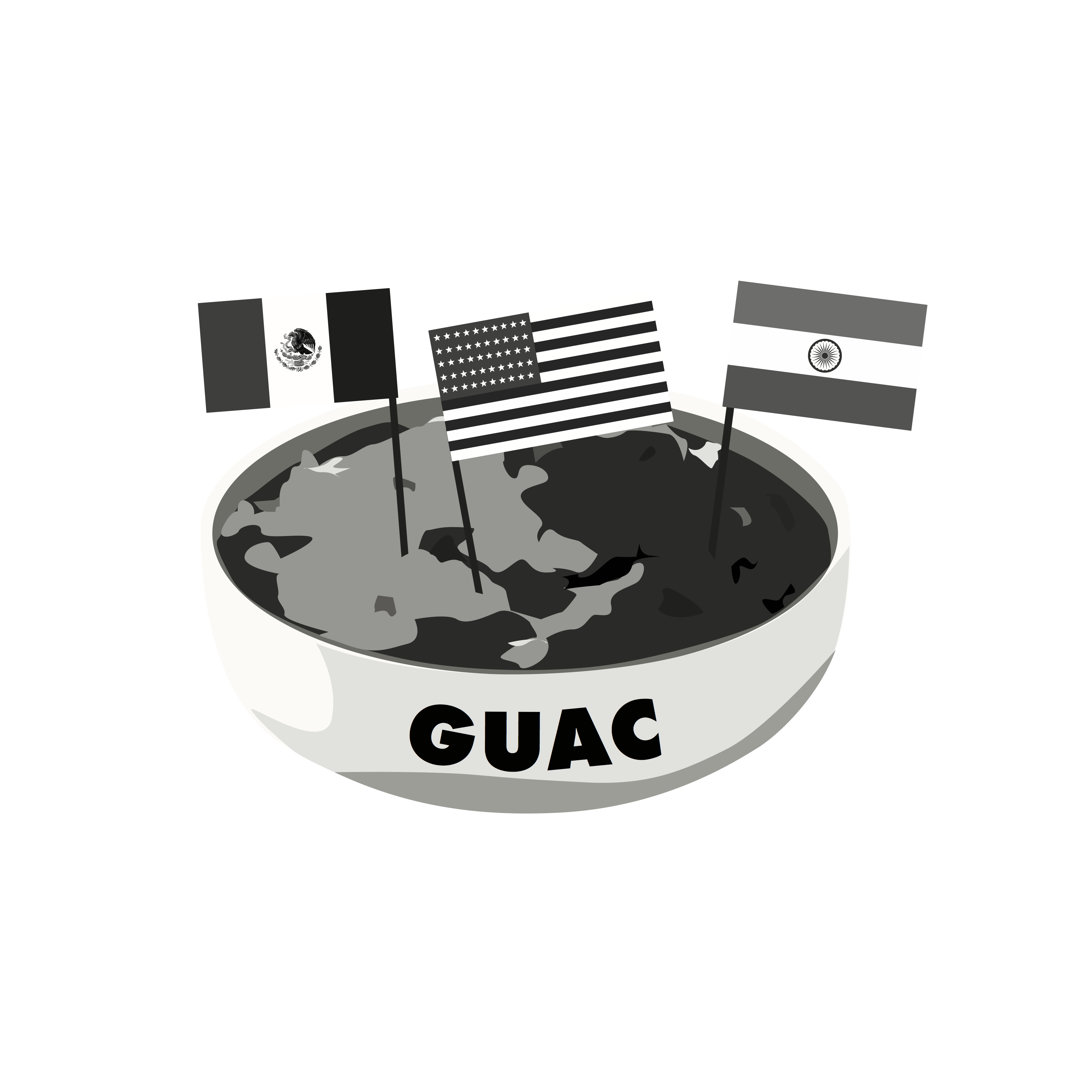
Advertisements in the early 20th century referred to the avocado as the “aristocrat of salad fruits,” and while the saying isn’t common today, you’d be hard-pressed to find someone who disagrees. Who doesn’t love a ripe avocado? Even harder to find is someone who doesn’t love the avocado’s most celebrated offspring … guacamole.
One night a few weeks ago I found myself in the Silliman kitchen watching a “guac-off,” hosted by a friend. For those who don’t know, a guac-off is an event popular in Texas and the Southwest that pits teams against one another to create the best guacamole. This particular competition allotted 15 minutes to four teams. The guac-off provided the base ingredients — avocadoes, tomatoes, garlic and lime — but contestants were encouraged to bring their own ingredients, with points for delicious innovation, of course.
Unsurprisingly, the final products were remarkably different in presentation and taste. One was particularly spicy, another embedded chips within the guac and one chef used tomatillos from her own backyard. My personal favorite appeared on a wooden pizza plate and contained pieces of diced mango, which, in conjunction with the lime, provided a tenuous balance between sweet and sour.
I wasn’t surprised by the piquant flavor of the guac — that was expected from seasoned enthusiasts. Rather, I was surprised by the contestant’s individual relationships with their dishes. Ranging from family tradition to new friendships, everyone had a profound tale that inspired his or her creation.
I panicked. Where was my story that forever linked guac and me? I wondered if I was just a poser. Perhaps my dedication to guac was of a lesser nature, and I was just a bandwagon fan. In an effort to validate my affinity, I began to think of my history with it.
My first memory of guacamole dates back to my first grade end-of-year celebration. Held at a neighborhood swimming pool, the party’s snack selection featured the usual suspects — carrots and ranch, goldfish and Oreos — and guac alongside, a new addition.
It soon became part of my daily regimen. In the years following, I and the other kids in my carpool would devour it after school at “El Jarrito,” a local Tex-Mex restaurant. There I was introduced to tableside guac, where a server brings avocados and other ingredients to the table and creates in front of your eyes.
Guac followed me to middle school, where it would make appearances at various bar and bat mitzvahs, by which point it had long lost its novelty. In high school, guac transformed itself into the perennial drunk food. People pretending to be drunk would call out, “Where’s the guac?!” and we would point to the near-empty container.
Lamentably, guac has become a rare sighting in New Haven. Many see Yale Dining’s abominable version of guac as highly pureed, and I would be forced to agree. In my opinion, the best guac-off is to be found at Pacifico v. Rubamba, although I need to try them more before I can announce a victor.
Growing up as an Indian American in suburban Texas, I was not expected to name guac as my favorite food. My family would scowl when I would announce my desire for a Mexican restaurant over an Indian one, and they always viewed guac as too bland. “Where is the chili powder?” my mom would always inquire, never pleased with the plethora of other spices.
On a family trip to India in the sixth grade, when I mentioned my love for Mexican food, my grandmother reprimanded me for being far too Americanized. She declared that guacamole was an adulterated form of avocado and remained perplexed at even the notion. In her eyes, a desire for Indian food should always precede that for another cuisine.
Many of my Hispanic peers, too, would dismiss my affinity as Americanized. They insisted the guac from my favorite El Jarrito was Tex-Mex, a fusion of American and Mexican cuisine. They exclaimed I had never had true Mexican guac and if I did, I might not like it. To them, I was just another Indian gringo.
What they, and my grandmother, were saying is that my penchant for guac doesn’t occupy a logical place in my life. My constant cravings for Mexican food and desire to have guac at every social function doesn’t fit into a cultural narrative that others have created for me.
I remember fervently searching for comebacks to contest these assertions, as if a single statement could convince people that my passion for guac was genuine and fit nicely into my cultural identity. I would usually revert to “I just like it!” which didn’t do much to satisfy my critics. They desired a statement with more pizzazz that would categorically affirm my right to state guac as my favorite food.
I never found such a statement, and today I’m no longer looking. That night a few weeks ago I ran from the Asian American Cultural Center to the guac-off wearing my cowboy boots from home, and it all just seemed to click. No competition between guac and another food. No questioning friend. No justification or confusion. It was just … normal. Maybe if I had shared my story (and arrived on time) I’d be writing this as the 2015 guac-off champion.
Contact Rohan Naik at rohan.naik@yale.edu .







